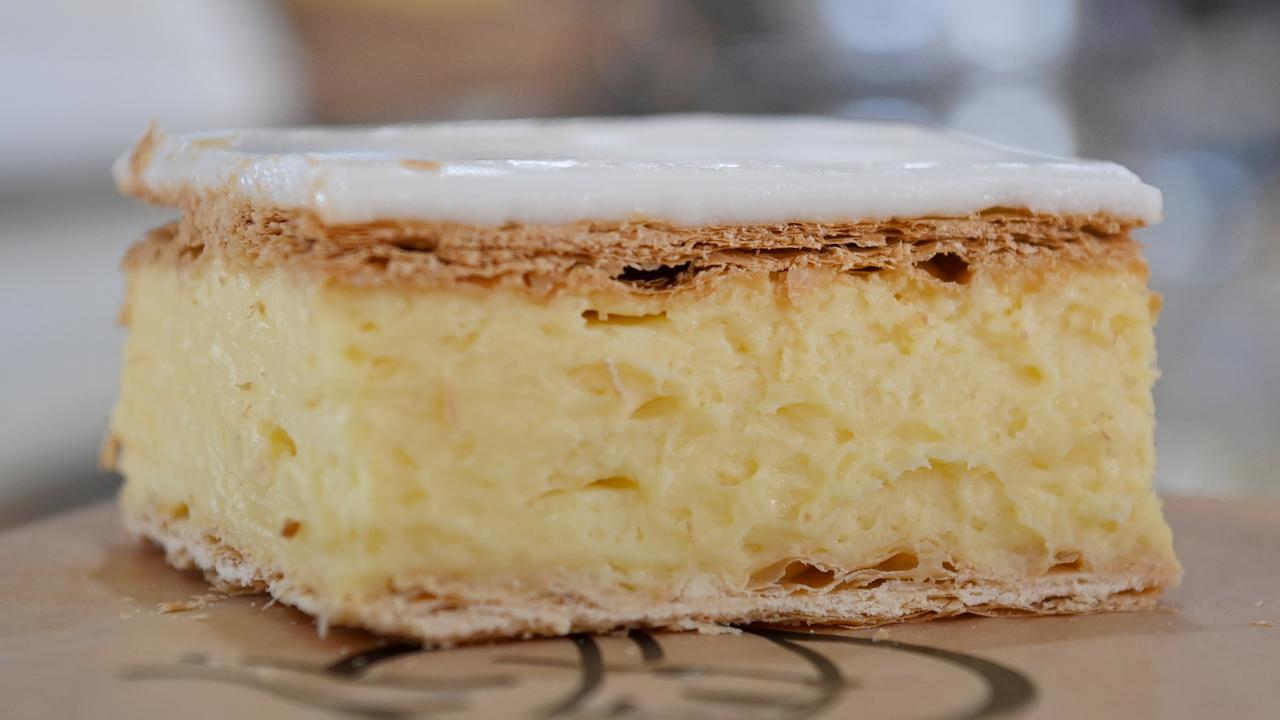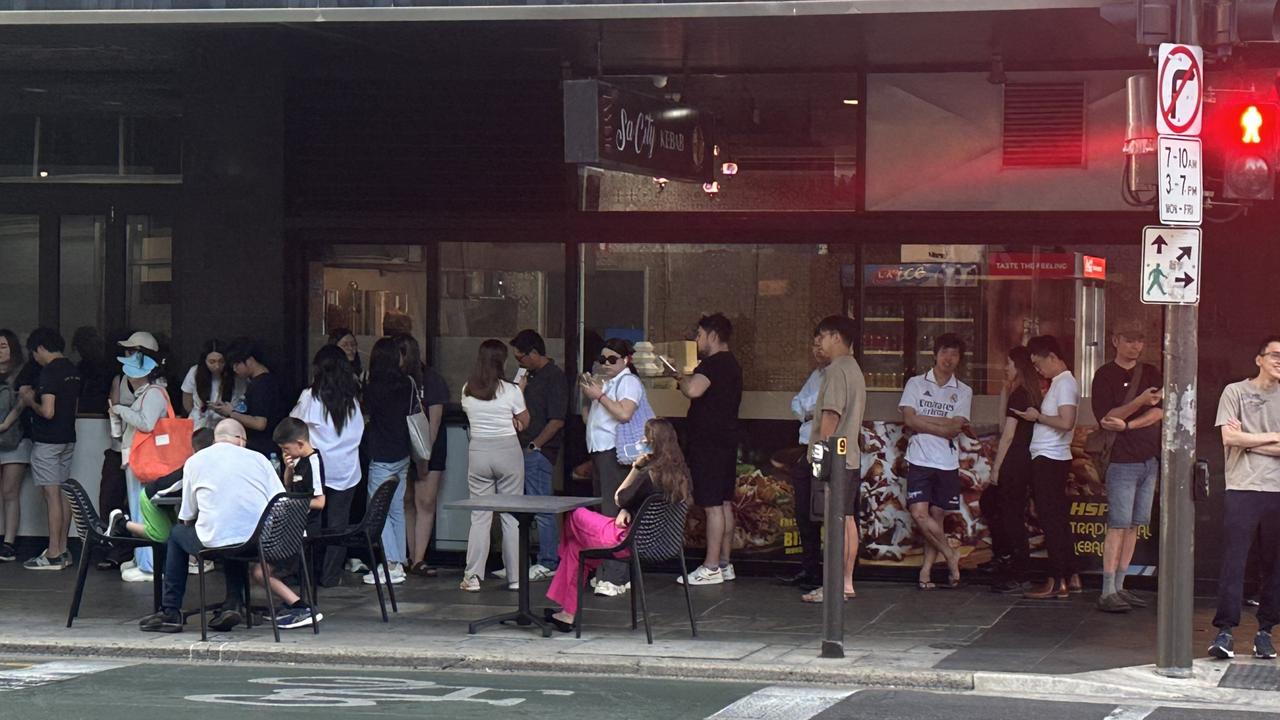SA’s most iconic fast food outlets – and the stories behind them
When it came to fast food in Australia, SA was quick off the mark, founding several iconic brands that went national and in some cases global. Here are their stories.
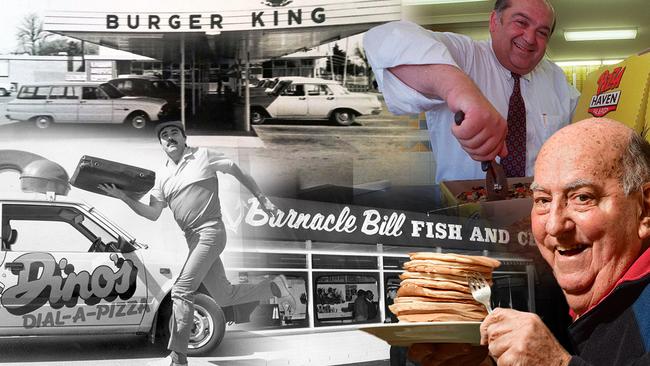
Food & Wine
Don't miss out on the headlines from Food & Wine. Followed categories will be added to My News.
We all know Adelaide punches above its weight in just about every domain you might care to mention.
We’ve given the nation great leaders, AFL legends, Melbourne Cup greats, Academy Award-winners and Nobel prize laureates.
We gave the world the wine cask, chicken salt, the dual-flush toilet, the Hills Hoist and the Stobie pole. (OK, that last one didn’t really catch on, but you can’t win ‘em all).
And since at least the 1960s, and through the 1970s and 1980s, South Aussie entrepreneurs were also responsible for helping to start businesses designed to cater to Australia’s growing appetite for, and obsession with, fast food.
Several popular national chains were born in South Australia, some of which were, sadly, lost to the annals of time, while others continue to do a roaring trade across the country.
Step back in time as we celebrate some of SA’s most iconic fast food and beverage chains.
BURGER KING
Founded: 1962
Flagship store: Forestville

Founded by American-born Adelaide businessman Don Dervan, the first Burger King restaurant opened on the corner of Anzac Highway and Leader St at Forestville in 1962.
Inspired heavily by US culture and popular TV shows, Adelaide’s first Burger King employed waitresses on rollerskates, serving tasty burgers and delicious
milkshakes to patrons who sat outside waiting in their cars.

As Dervan’s daughter, Adrienne Peele, recalled in an Advertiser podcast in 2017, the chain expanded to locations in Glenelg, the city, Unley, Port Rd, Marion and Elizabeth and by 1970 was selling a million dollars’ worth of burgers annually through 17 restaurants around Australia.
But Dervan has another claim to fame. He’s largely the reason Burger King restaurants are known as Hungry Jack’s in Australia.
Read more about Dervan’s pioneering efforts in Adelaide’s fast food scene, and listen to our podcast on Adelaide’s own Burger King.
BARNACLE BILL
Founded: 1970
Flagship store: Unley
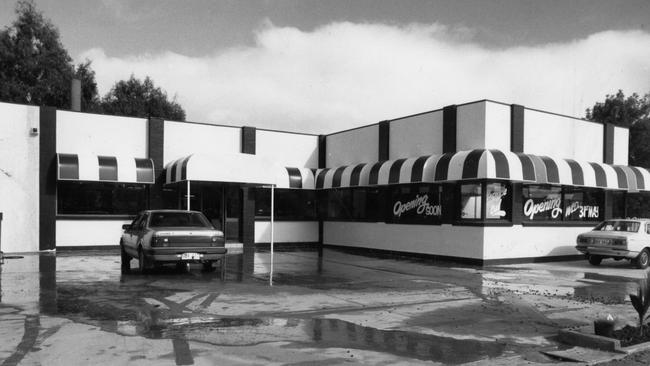
It entered the market at about the same time as US fast food giants Pizza Hut, Kentucky Fried Chicken and McDonald’s but Barnacle Bill was unique in the genre in that it was wholly South Australian.
Started in 1970 by businessman George Leonida, the flagship store was in Unley.
According to a company flyer, Mr Leonida often drove his baby blue Charger to work and had a lifelong passion for “fresh quality seafood and tasty family meals”, until his death in 2013.
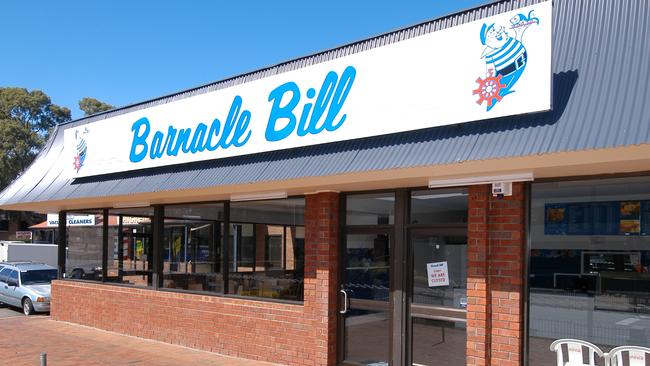
The chain continued to expand throughout South Australia and into Victoria in the 1980s and 1990s, its blue and white branding and slogan “Fresh from the sea, it’s gotta be Barnacle Bill’s!” becoming advertising fixtures.
A TV ad from 1984 lists outlets in Elizabeth, Morphett Vale, North Adelaide, Unley, Anzac Highway, Woodville and Torrensville and features a singing live action version of the company mascot - an old man mariner in a blue and white striped shirt and cap.
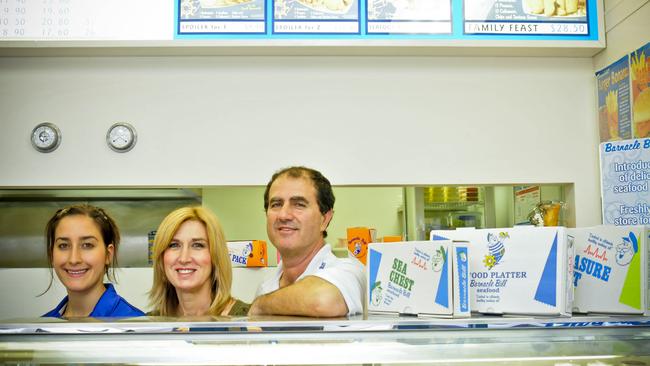
A Melbourne ad for the chain lists stores in Campbellfield, Frankston, Templestowe and Wantirna. There was also an outlet in Mildura.
Speaking of the ads, one TV spot for the restaurant features a young, aspiring actor named Portia de Rossi, later of Ally McBeal and Arrested Development fame.
As The Herald Sun writes, Barnacle Bill tasted success in Victoria for a few short years but eventually saw all its restaurants there close.
But 53 years after George Leonida opened his flagship store, the brand is still going strong with 14 franchised restaurants still in business, all of them in South Australia.
DIAL-A-DINOS
Founded 1984
Flagship store: St Peter’s

Pizza wasn’t exactly a new idea in town when Adelaide entrepreneur Richard Wescombe launched his first Dial-A-Dino’s restaurant in 1984.
But picking up the phone, ordering your favourite pizza and having it delivered right to your door (hopefully still piping hot) sure was!
Westcombe’s start-up pizza chain was the first in South Australia to offer home delivery - a concept he borrowed from American TV and a Queensland chain which was the first in Australia to offer home delivery.
“The idea originally came from an episode of the TV show Leave it to Beaver,” Wescombe told former Advertiser columnist Bob Byrne in 2020.
“Watching an episode of the show one night I saw that they ordered pizza in.
“I don’t know if it was a particular vehicle that brought it but it just tripped something in my mind. And that’s how it all started.”

“I was already involved in Bertie’s Pancake Kitchen at the time and went off to Queensland to look at a company called Sylvio’s Dial a Pizza.
“They had a unique idea where they were delivering pizzas and they had these funny-looking things on the roof of their cars, like a phone with spotlights on them. So it was not so much a new idea; it was more just an improvement on an old idea.”
As Byrne writes, a fleet of yellow Daihatsus with a big red phone on the roof soon became a familiar sight around town, and over the next five years the chain pursued an “aggressive expansion program”.
By 1989, Dino’s had 120 stores in Australia, 16 in New Zealand, eight in Japan and six in the UK. That year, Pizza Hut came knocking.
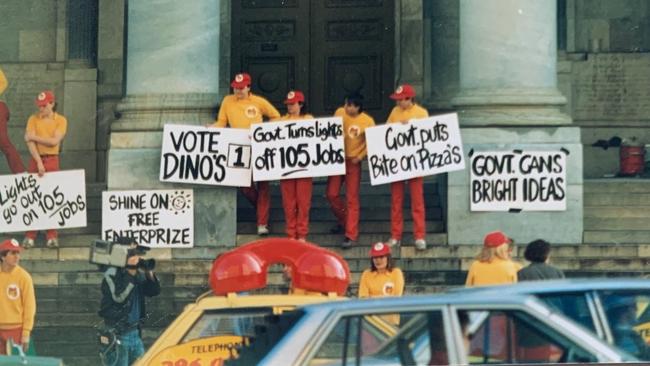
As Wescombe told Bob Byrne, the US giant was looking to expand its operations in Australia, especially in major markets such as Melbourne and Sydney.
“It took about 12 months of negotiations to get it across the line. We had a lot of franchisees in the business who were really just like individual store owners, and we had state sub-franchisors looking after the franchisees.
“We had to get them all to agree to the deal with PepsiCo, the owners of Pizza Hut.
“But eventually it was done and they changed the name to Pizza Hut and Dial-a-Dino’s was gone; it just suddenly didn’t exist any more.”
Read Bob Byrne’s full interview with the Dino’s founder.
FASTA PASTA
Founded: 1984
Flagship restaurant: Pirie St
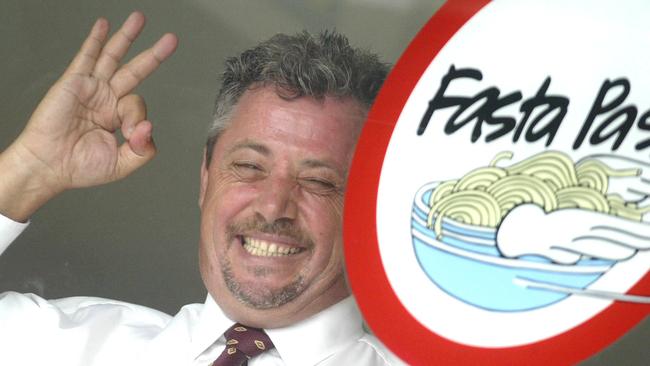
One night in 1979, during a busy service at an Italian eatery in the city, the restaurant owner commanded his chef to get a move on and make the pasta.
And a national restaurant chain was born. The restaurant owner had ordered the chef, in Italian, to “fa sta pasta!” or “make this pasta!”.
“The two laughed and laughed about the fact that making pasta or, “fa sta pasta”, quickly translated to Fasta Pasta in English,” a company brochure explains.
“One of them suggested that maybe one day, they should open a little restaurant and call it “fa sta pasta’”. Four years later, that’s exactly what they did.
Founded in 1984 by restaurateurs George Belperio, Vic Ventura and Nino Pollina, the first Fasta Pasta was in a basement dining room, in a building on the corner of Pirie and Hyde streets.
As Belperio explained on an episode of the advertising and hospitality podcast Madman & the Hospitalian, the trio bought the building after tasting success with Rundle St restaurants La Mensa and Al Fresco.
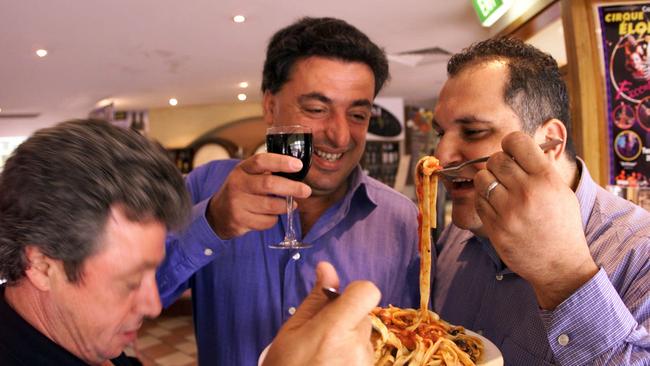
They started a new restaurant called Marco Polo in the new Pirie St building, while all the time wondering how to better use the basement, besides for storing goods.
“The business plan as stupid as it sounds was do something down there and we had a bit of a think about what - Fasta Pasta,” Mr Belperio told the podcast.
The team evolved the idea with the aim of getting the restaurant on its feet, selling it for a profit, then enjoying the yearly rent.
“But like every other business we’d had to date we had open kitchens, you could see the product made, there was energy, there was attitude, there was warmth, there was meet and greet and it was probably the best value launch of any business we had.
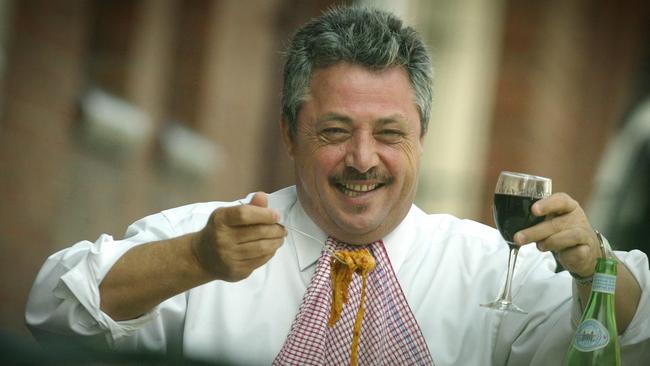
“We were selling pasta for four bucks, five bucks.
“Initially we thought we’ll cop the unemployed and the students. We got doctors, we got office workers, we got car salesmen and it just filled up and overflowed for years.”
As Mr Belperio told SALife, a second restaurant was opened in 1989 “to see if it would work in a different demographic area, and it did”.
The company began franchising in 1990 and now has 19 stores, Australia-wide.
The brand tried a move into Malaysia in the early 2000s.
But as Mr Belperio told the Madman & The Hospitalian podcast that despite having a good team of people, and adapting the menu to suit a halal kitchen, the venture “didn’t really work”.
PANCAKE PARLOUR
Founded: 1965
Flagship restaurant: Gilbert St
In 1959, on a trip to America, Roger Meadmore and his wife Helen “decided it would be fun” to drive from New York to Miami. And so they did, eating pancakes for breakfast every day.
The couple dreamt of opening their own pancake restaurant back in Melbourne but the city was considered too expensive.
So, for the next six years, they worked to raise the necessary funds, including by travelling around Australia selling, of all things, hot dog cookers.
But it proved a fortuitous venture.
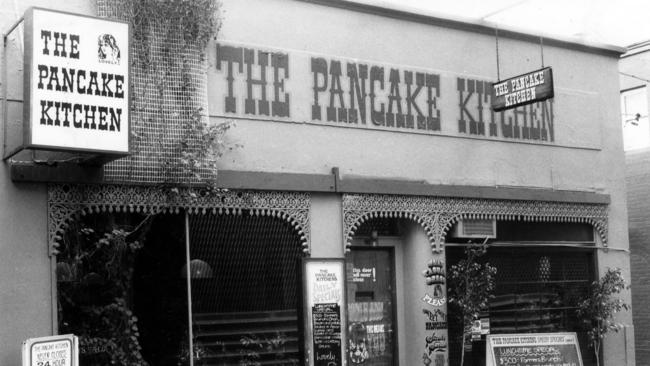
In Adelaide, they found a burned out delicatessen and, along with friend Allen Trachsel, converted it into their dream business, The Pancake Kitchen, in 1965.
According to the company’s official history, the restaurant opened on Sundays - a radical concept in those days - “but we were all about convenience, so we opened on Sunday during the 1966 footy season”.
And as it happens, this publication also played a part in the early days of the business.
As their website explains: “A couple of our earliest customers worked at The Advertiser. One night, they managed to get menus printed for us - on dark-brown leftover shirt packaging! They were too dark to read, but they did the job.”

Roger and Helen eventually separated, and she and Allen were married.
The Adelaide restaurant was sold to new owners, Roger moved to Sydney and Helen and Allen moved back to Melbourne to start a pancake restaurant there in 1969.
They set up shop in Market Lane naming their new business The Pancake Parlour, because the Pancake Kitchen name was already registered in Victoria.
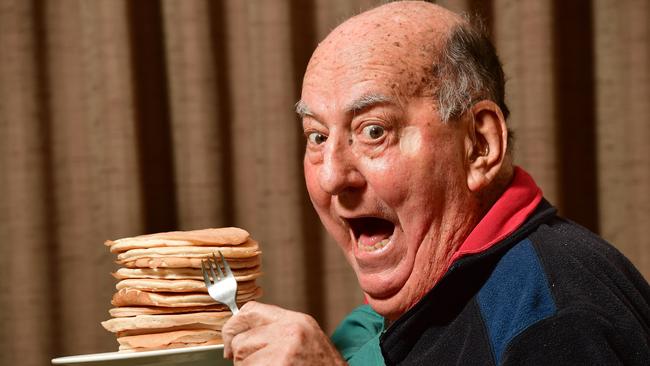
The business thrived in Melbourne with 11 restaurants opening between 1969 and 2015.
Two other restaurants were licensed to operate in Ballarat and Canberra.
In 2015, 50 years since the original Pancake Kitchen was started in Adelaide, the company reportedly employed 800 people and had an annual turnover of $40m.
All these years later, the business is still family owned and operated with Roger’s son Simon Meadmore taking on the CEO role in 2003.
The Adelaide eatery was taken over by Mark Sandgren in 2017 and trades now under the name The Original Pancake Kitchen.
In 2019, the business posted a photo on Facebook of a beaming Mark Sandren sitting next to a clearly satisfied customer who knew a thing or two about good pancakes.
It was Roger Meadmore himself.
PIZZA HAVEN
Founded: 1984
Flagship restaurant: Glenelg
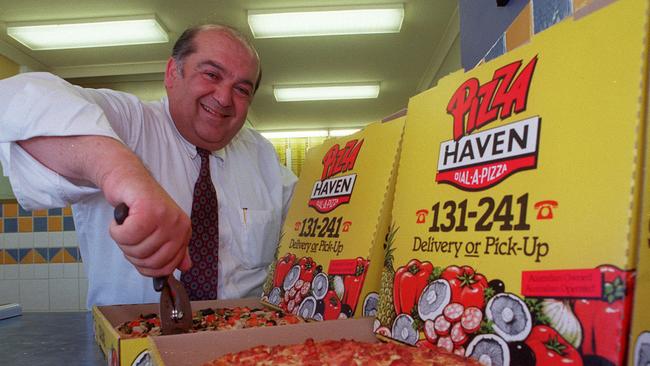
In the early 1980s, while Richard Wescombe was across town setting up Dial-A-Dino’s, four Adelaide brothers were about to embark on their journey in the world of take away pizza.
Their story is told in State of Mind: The Success Secrets of 50 South Australian Entrepreneurs, a 2005 book by Chris Doudle and Karen Baldwin.
The sons of Cypriot migrants, Evan, Louis, Bill and Gabriel Christou were looking to build on the success of the family fish and chip shop at Marion.
In 1984, an extract from the book explains, they found an empty shop in Glenelg, took out a $24,000 mortgage on their parents’ house and the very first Pizza Haven restaurant was born.
The brothers worked hard to get the first restaurant on its feet, and less than a year after launching, Pizza Haven followed Dial-A-Dino’s and introduced its own home delivery service, which was still a novelty in the fast food market.
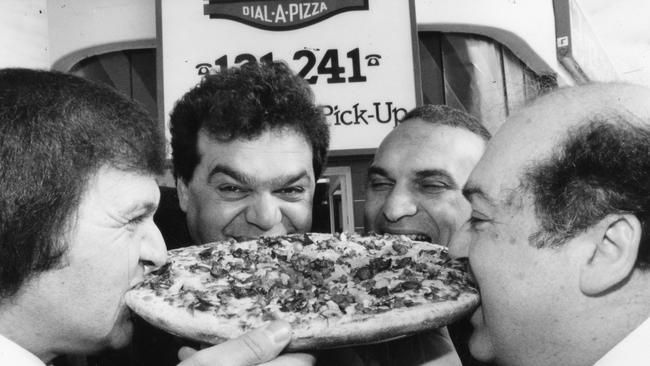
According to a report in the Australian Financial Review in 1993, that decision was a no-brainer after Bill Christou was sent to a Dino’s outlet to buy one of their competitor’s pizzas for comparison.
Bill waited 45 minutes for his pizza and in that time, noted that a new order was rolling in every minute, the AFR reported.
“They did what we were doing in three days,” he said.
“Within a week we were in the pizza delivery business. We doubled our take overnight and never looked back.”
As Evan Christou told Chris Doudle and Karen Baldwin for their book, the brothers had big plans for the business from day one.
“From the very outset, we opened the restaurant with a view to expanding. It was never our intention to open just one restaurant,” Mr Christou said.
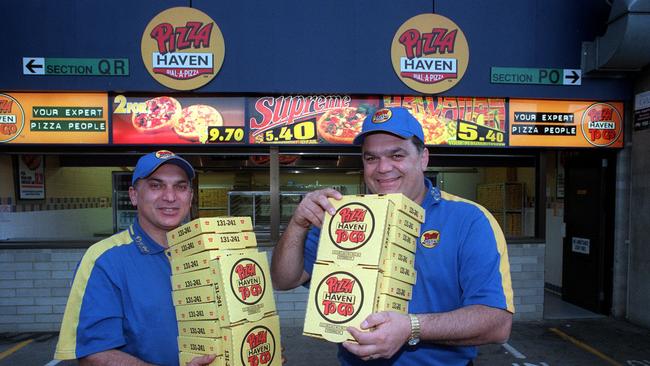
“We always said ‘let’s open something that we can develop further’”.
The second restaurant opened in Christie Downs in 1985 and franchising began with restaurant number seven, which opened at Enfield in 1986.
The first interstate restaurants opened in Melbourne in 1990 and in Sydney, in 1992 and the chain also expanded into New Zealand.
As the AFR reported, Pizza Haven was the only wholly-Australian owned company in the top 10 list of fast food operators and in 1991 had a turnover of $25m.
In 2005, Domino’s took over the company’s 35 New Zealand restaurants and in 2008, Pizza Haven’s Australian stores were bought out by Eagle Boys, which was in turn taken over by Pizza Hut in 2016.
WENDY’S MILK BAR
Founded: 1979
Flagship outlet: Adelaide

Not to be confused with the US burger chain, the popular Australian ice cream and hot dog brand was founded in Adelaide in 1979 by business partners Geoff Davis and Phil Rogers.
As the Australian Financial Review reported in 1996, Davis and Rogers had already tasted success as franchisees of “Australia’s most successful Wimpy Bar” (a US fast food chain), in Hindley St, when “they came up with the idea of taking soft serve ice cream up-market in quality and taste and adding a vast variety of toppings”.
With an eye to trends overseas, the pair focused on food halls in major shopping centres, rather than suburban shopping strips.
And within six months of launching had three stores in SA and had already taken the brand interstate with stores in Melbourne and Perth.
By 1995, the AFR reported, Wendy’s (later known as Wendy’s Supa Sundaes) had more than 300 franchisees in Australia, New Zealand and Asia, with a turnover of $73m.
In 2013, in the face of rising costs, the company partnered up with On the Run to trial smaller and cheaper format kiosks at OTR outlets.
In 2014, the company was sold to the Singapore-based Global Food Retail Group.
More than 120 Wendy’s outlets are still in operation across Australia and New Zealand.


